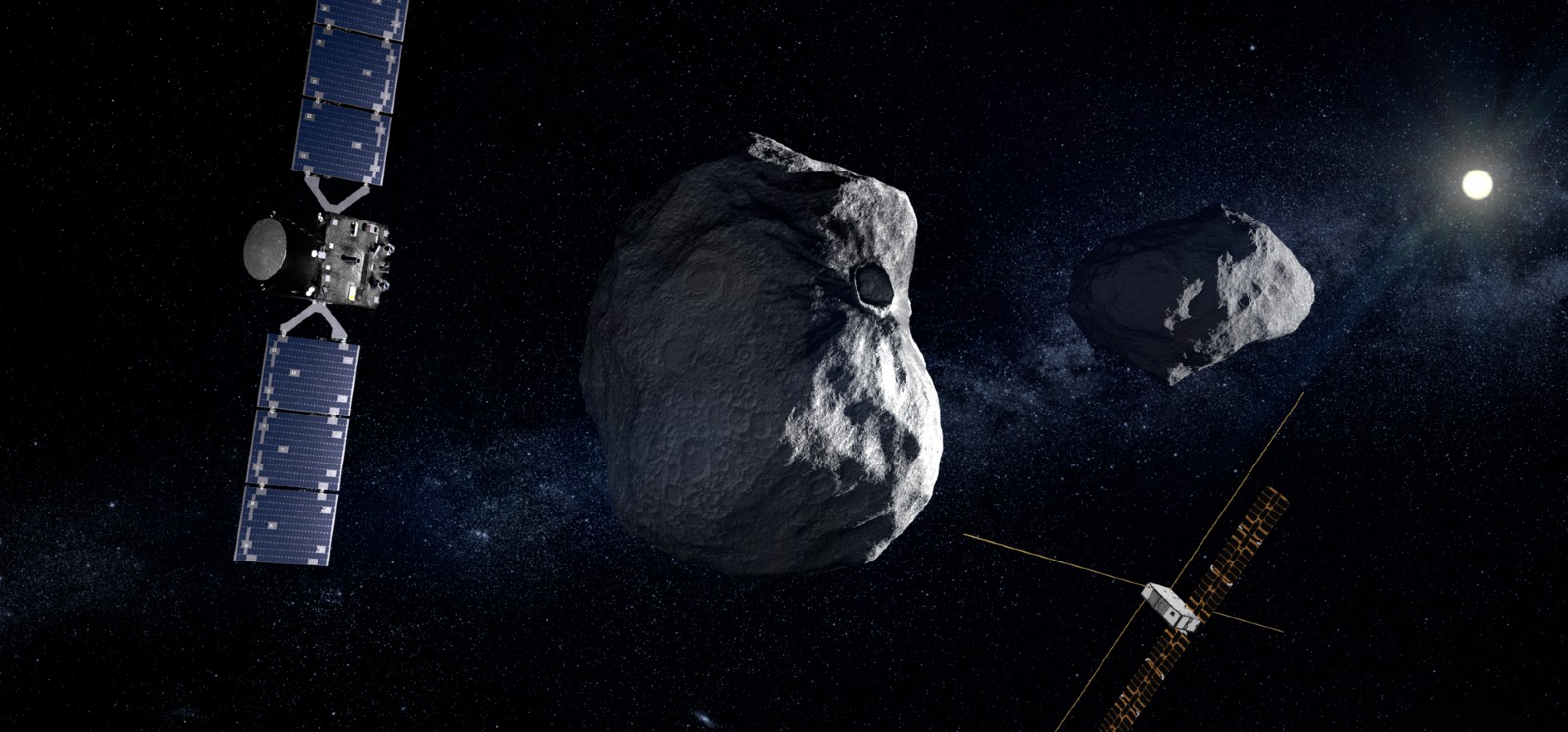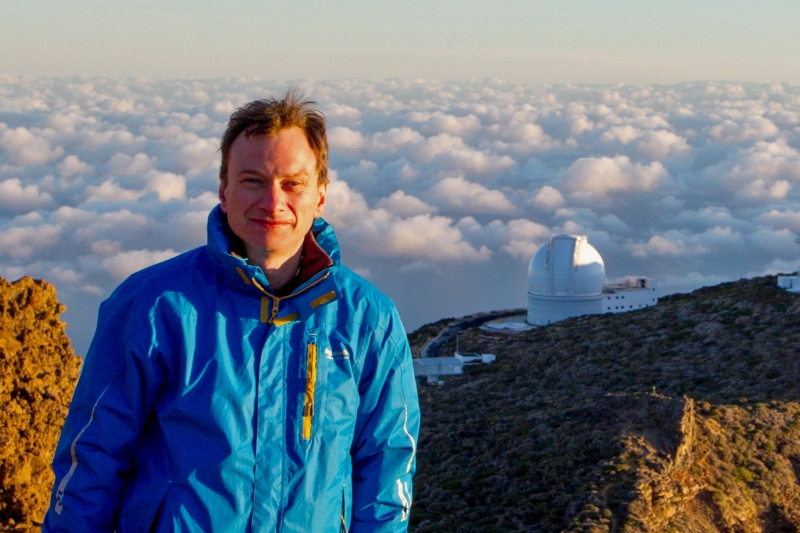Queen’s astronomer on groundbreaking asteroid mission
A Belfast-based astronomer is gearing up for the culmination of over 20 years of preparation when he takes part in the European Space Agency’s (ESA) first ever planetary-defence mission, to help ward off the threat of an asteroid crashing into Earth.

Professor Alan Fitzsimmons from the Astrophysics Research Centre at Queen’s will be at ground control for the ESA Hera mission at the European Space Operations Centre in Germany. Hera itself will launch from the Kennedy Space Centre at Cape Canaveral, Florida, USA.
The exact day of the launch will not be confirmed until a few days before, but it is scheduled to happen between October 7 and 26.
Blasting into deep space on a Space X Falcon 9 rocket, Hera seeks to gather critical, new data and insights about how to deflect asteroids which may be bound for Earth with potentially disastrous results and will showcase a raft of new technologies in the process. It marks the first planned rendezvous with a binary asteroid in the history of space research.
Astrophysicists have found over 35,000 ‘Near Earth Asteroids’ to date and, of these, 1,657 are large enough and pass close enough to us to be on a continuously monitored risk list. None of these will impact the Earth in the next 100 years, but more are discovered each year and the concern is about future asteroids that could wipe out cities or even countries.
Next Steps
Scientists have long debated and researched how best to avert any potential threat. In September 2022, the NASA DART mission spectacularly hit the small asteroid moon, Dimorphos and changed its trajectory, as the first test of ‘kinetic impactor’ technology designed to deflect asteroids.
Hera’s job is to complete this experiment, by measuring the mass of Dimorphos moved by DART and seeing the precise effect of the impact on the moon. It will also measure the properties of Dimorphos’ parent asteroid, Didymos, as it orbits around every 11.5 hours.
After launch, Hera will use a flyby of Mars next year that will place it on a trajectory to reach the asteroids at the end of 2026. Studying Dimorphos and Didymos, Hera will collect invaluable data that will shine light on the 2022 collision. This will allow scientists analyse in much greater detail than ever before what exactly happened in the DART impact, in the hope that this technique of deflecting asteroids can be applied to potentially threatening asteroids in the future.
Professor Fitzsimmons is a member of the Hera Science Management Board and has been assisting ESA to plan this planetary defence mission for decades. He said:
“Hera is a critical step towards the day when humanity might need to deflect a threatening asteroid and is a great example of how science can be used to try to prevent loss of life as a result of dramatic, natural disasters. Scientists and engineers from all over the world have been involved, it’s an example of best practice in international scientific collaboration for the greater good.”
As well as serving planetary defence, Hera will also demonstrate the latest in European technologies in deep space including autonomous vision-based navigation and inter-satellite links connecting all three spacecraft that make up the mission. Hera will deploy two shoebox-sized spacecraft at the asteroids, marking ESA’s first deep-space CubeSat mission. Altogether, the three spacecraft carry 12 instruments in total that will investigate the asteroids at close range.
One of the CubeSats, named Juventas, will carry the smallest radar instrument ever flown in space, which will perform the first radar sounding within an asteroid. The other CubeSat is called Milani and will image the asteroids in a wider range of colours than the human eye can see. If all goes to plan, the Cubesats will be landed on Dimorphos at the end of their missions.
Professor Patrick Michel from the Université Côte d’Azur in France is Principal Investigator for Hera. He said:
“Hera is fascinating because it will be performing the first rendezvous with a binary asteroid, the first measurement of the internal structure of an asteroid and the first landing of a small CubeSat on a body as small as 150 metres! It will also give us in detail the outcome of the DART impact, which might yet give us possible surprises.”
Looking ahead to 2026, Professor Fitzsimmons added:
“It will be thrilling to get the data back from the mission and to start applying it to potential asteroid threats in the future.”
Featured Expert

Media
Inquiries to Una Bradley u.bradley@qub.ac.uk